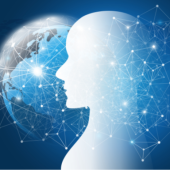After Being in a Coma, What I Learned From a Buddhist Monk
After recovering from a coma, I finally completed a Ph.D. But only years later, when I learned about what an emotion really is, was I able to control how I felt. A chance meeting with a Thai Monk on a beach in Dubai (where I also met my wife) completely reshaped my feelings about my own emotional brain.
Almost to the day, 21 years ago I went into a coma from a road accident. After a long recovery, and re-learning to walk and talk again, I became fascinated with the brain and this led me to research neuroscience. The full story of my recovery is detailed in a book I finished last year, but the key theme is about the emotional brain.
In between the coma and the book, I have learned some amazing brain hacks from my friend the Thai Buddhist Monk, Punnadhammo. My journey into neurological recovery was—well, how can I say this best—yes, it was emotionally exhausting. The emotional skills were surprisingly much more difficult than learning to walk and talk again after being in the coma.
The key ‘hack’ I learned from Punnadhammo was how to label and then change my feelings. But what about my emotions? This is where neuroscience came in. There is often a debate in the academic community on the difference between feeling and an emotion. In the research of applied neuroscience, we found that emotion is a specific event in the brain. Others argue emotions are psychological, not able to be identified neurologically. Neuroscience can be pretty confusing. Let’s see if we can clear a few things up after listening to Punnadhammo.
Punnadhammo explained to me that a friend, another monk, was meditating on how to control his response to pain. His friend was planning to set himself alight and burn to death in defiance of the Thai government. Punnadhammo said this to me not to shock me but rather to explain that if you take careful observation of your brain’s response to threat, fear, or even pain you can control the feelings that follow. He continued. An emotion happens, but our feelings are choices that you can control. As a result, you can also control your behavior and choices. But it takes patience and practice. Just like learning any new complex skill.
So again: What’s the difference between an ‘emotion’ and a ‘feeling’?
An emotional trigger in the brain occurs before we can consciously interpret our feelings. An emotion is pre-conscious, but feelings occur when we notice the state change in our mind and body.
Neurologically an emotional response is a reaction to an environmental stimulus, and a feeling is a subjective (mental) response that occurs when one becomes aware of a physical change—like noticing your pulse rate increase or feeling a shiver down your spine.
This automatic emotional process begins when your brain’s fast-pathway is triggered to protect you from harm. It can even be triggered while watching a movie, where a car collision is about to happen, for example. Many people might find their feet pressing down on imaginary brakes under the movie theatre seat.
This is why feelings are important to label? Labeling them makes us better at managing and controlling them. When feeling angry we may react before thinking it over. Identifying and then labeling them can be difficult as the terms, "emotion" and "feeling" seem interchangeable.
Remember, the brain has this automatic emotional response and then the mind can consciously notice this as a feeling. Try and pay attention to how you feel right now. Spend a moment to be mindful of how you are feeling. It is often asked if mindful meditation alters the brain. Punnadhammo would wholeheartedly agree and explained that meditation has a profound benefit.
The Neuroanatomy of Emotion
An emotional response initially occurs when the mind becomes conscious of the fear response in the amygdala. The amygdala is also called the “fear center” of the brain. The diagram below shows the four core emotions that emerge in the brain. The first is fear, in yellow, followed by disgust, in green and is associated with activity in the insula.
Anger is linked to the orbitofrontal cortex and sadness originates in the anterior cingulate cortex. Once your emotional arousal is psychologically processed, your mind will notice them as feelings, like rage one feels when cut off in traffic. You first have the shock (fear response) and then a moment later you may notice you feel fury or many other feelings.
Take-Home Message
We discussed the neuroscience of emotion and learned about the Buddhist perspective. Hopefully, the difference between an emotion and a feeling was cleared up. So please remember that an emotion is a neurological event and feelings are psychological. Feelings occur when you notice you are falling in love or when you feel fearful that you may be falling off a chair. Finding emotional safety controls fear, and it’s the first step to being happy.
Please remember that you can ‘Train Your Brain to Change Your Mind’ so you can feel happy—really happy. But real happiness feels more like being peaceful, as Punnadhammo, explained to me. But that is another story about the neurotransmission of finding happiness.
Take care, JJ
Books on Emotion, Feelings and the Brain
- The Emotional Life of Your Brain: How Its Unique Patterns Affect the Way You Think, Feel, and Live by Richard J. Davidson (2012).
- Mind Control: Over Negative Emotions and Thoughts by D.D. Tai.
- Brain Reboot: A Change of Mind Will Change Your Brain by Justin James Kennedy, foreword by Marshall Goldsmith.
- The Feeling Brain: The Biology and Psychology of Emotions by Elizabeth Johnston.





